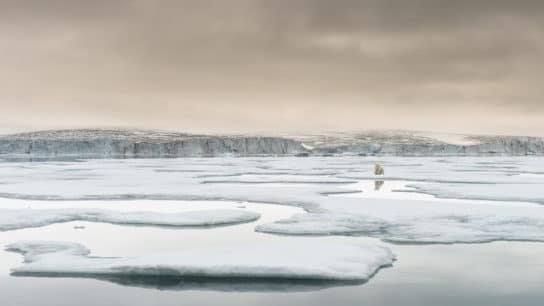“If [Hurricane] Katrina pulled back the curtain on the reality of racism in America,” as Naomi Klein observed, then today – amid intensifying climate disasters – the need to confront this crisis through a social justice lens is more urgent than ever.
—
By Mia N
In 1896, Swedish scientist Svante Arrhenius presented the first clear explanation of climate change to the world. It has unfolded gradually since then, but its impacts are becoming ever more apparent.
Rising ocean temperatures and increased moisture in the atmosphere are amplifying the frequency and severity of natural hazards. The intensity of natural disasters has exceeded earlier scientific predictions, as the changing climate acts as a “threat multiplier” that increases unpredictability and amplifies the impact of natural hazards, according to the Intergovernmental Panel on Climate Change.
“The risks associated with climate-related disasters do not represent a scenario of some distant future. They are already a reality for millions of people around the globe, and they are not going away.” – UN Undersecretary General for Political and Peacebuilding Affairs Rosemary Anne DiCarlo
Hurricane Katrina, a powerful Category 4 hurricane with sustained winds exceeding 135 miles per hour (217 km/h), hit New Orleans in late August 2005, claiming 1,833 lives. Last September’s Hurricane Helene was the deadliest hurricane to strike the continental US since Katrina, with a death toll surpassing 200 people. Hurricane Milton, which hit Florida just two weeks later, was one of the most powerful storms to strike the state in over 100 years. The two back-to-back hurricanes forced millions to flee their homes and left many with severe mental burdens for recovery.
A study published shortly after confirmed that ocean warming fuelled by human-made climate change intensified all hurricanes in the Atlantic last year.

In January, deadly wildfires engulfed Los Angeles. In a matter of days, they spread to over 57,000 acres of land, leaving thousands of homes and structures in ruins and claiming more than 30 lives. Research later confirmed that climate change played a role in the fires.
While natural disasters affect entire communities, racially and ethnically marginalized groups often face disproportionate risks and greater obstacles during recovery due to long-standing social, political, and economic inequalities. Natural disasters in the era of climate change are not just environmental events — they are social justice issues.

In the aftermath of Hurricane Katrina, 84% of those reported missing in New Orleans were Black, despite Black residents comprising only 68% of the city’s population at the time. Many black neighborhoods were built on the low elevation of the city, with fewer resources to evacuate safely.
During Hurricane Helene, more than 138,000 mobile homes in North Carolina were located in counties that received a major disaster declaration. Because mobile homes are generally more vulnerable to extreme weather, residents must evacuate to somewhere else for safety – typically at their own expenses.
Wildfires in California disproportionately impact Black, Indigenous, and People of Color (BIPOC). It may sound bizarre to many people, since the white population is overrepresented in the wildfire-prone areas. And yet, compared to other communities, white people tend to receive more resources, resulting in significantly greater resilience to natural hazards.
A study shows that Indigenous communities in California are exposed to roughly 1.7 times as much wildfire smoke as the general population, on average. In general, Indigenous peoples are six times more likely to reside in regions prone to wildfires. Unfortunately, these communities are not well supported during climate disasters like wildfires, due to a lack of resources, information, and funding. Despite safe evacuation procedures, extreme weather events can still lead to significant emotional distress and feelings of disconnection, particularly among Indigenous communities whose identity and well-being are closely tied to the land and natural environment.
Alleviation and Solutions
Not all natural hazards have to turn into a disaster, resulting in significant damage or casualties. Implementing natural disaster preparation, assessing potential risks, and building resilience can help avoid this.
A 2024 study revealed that each dollar allocated to climate resilience and preparedness yields a US$13 return in reduced damage, cleanup, and economic disruption. According to a calculation provided by the US Chamber of Commerce, the City of Miami’s $10.8 billion investment in hurricane preparedness and resiliency could pay off significantly in the event of a Category 4 hurricane. The effort is projected to save 184,000 jobs, protect nearly $26 billion in economic output, and preserve more than $17 billion in income across the region. Even without a major disaster, the resilience investments would still generate economic benefits by creating jobs and stimulating local employment during implementation.
Ensuring that disaster preparedness and related investments are implemented equitably means placing greater focus on communities most at risk. Support must be easily accessible, with information and resources provided in multiple languages to meet diverse community needs. This includes offering financial aid, sharing climate education materials, improving neighborhood infrastructure for greater climate resilience, and training residents in emergency response. For policies to be truly equitable, they must be guided by the lived experiences of affected communities and developed in partnership with local organizers and community leaders.
It is also essential to adapt preparedness plans to reflect the distinct needs and experiences of Indigenous communities, which often differ from the rest of the population. Moreover, integrating traditional ecological knowledge — rooted in respect and coexistence with nature — can offer valuable insights for sustainable environmental management.
Featured image: UN Women Asia and the Pacific/Flickr.
This story is funded by readers like you
Our non-profit newsroom provides climate coverage free of charge and advertising. Your one-off or monthly donations play a crucial role in supporting our operations, expanding our reach, and maintaining our editorial independence.
About EO | Mission Statement | Impact & Reach | Write for us













